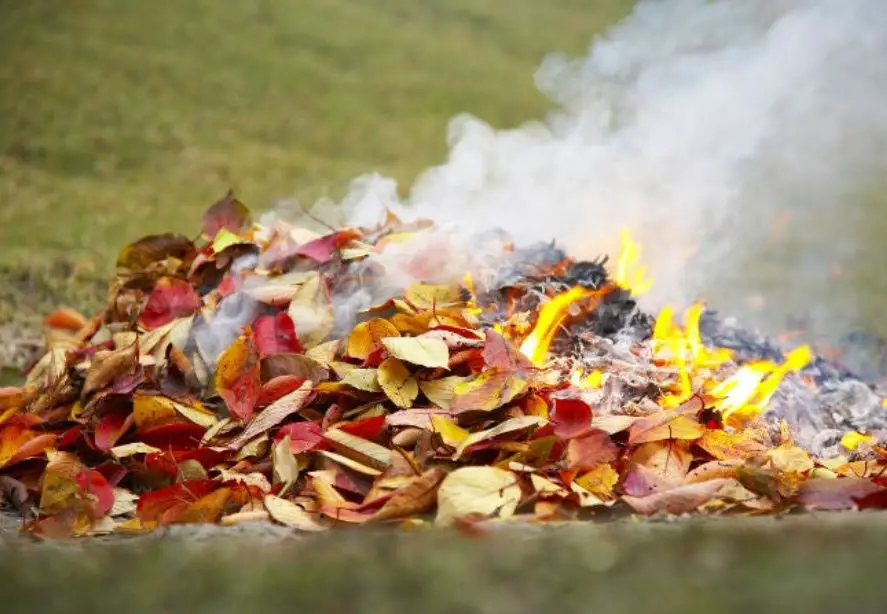Your backyard may need some kind of winter cleaning when winter sets in. Brush and brambles need to be chopped down because leaves fall and die. Small trees may be removed from bigger areas to clean the ground. After that, it is time to deal with the enormous heap of plant debris.
Burning yard garbage is a traditional solution for dealing with garden debris. Before you burn a brush, take into account both the environmental benefits and drawbacks of a brush pile.

Burning Yard Waste
It takes a lot of work to rake up all the leaves in the fall, so finding a way to get rid of them is an issue that often gets short shrift. Many gardeners have seen their parents build and burn brush piles, and starting a fire is the quickest and simplest solution. A single match completes the task. 1 minute and 34 seconds 0 0% volume 00:03:01:34
Today, however, we know that burning brush has drawbacks in addition to being a quick fix for the yard trash pile. When a pile of rubbish burns, many people are hurt, and the fire may unintentionally spread to other parts of the property, destroying any trees you meant to retain or even your home.
Burning Brush Contaminates Air
Burning leaves may cause fire risks as well as air pollution. Smoke is released by fire caused by yard waste and burning leaves. This smoke may include poisonous or at least irritating particles and gases. They increase the risk of respiratory illness since they may go into someone’s lungs and remain there for years. Naturally, this reduces the air that may enter the person’s lungs.
Thus, burning a brush pile might be risky, particularly for those with respiratory conditions like asthma. Incomplete drying of the leaves will result in more smoke. Fallen leaves that are damp from rain or sprinklers produce extra smoke that contains substances called hydrocarbons. At best, they may be exceedingly irritating to a person’s eyes, nose, throat, or lungs; at worst, they can be cancer-causing.
Remember the carbon monoxide that blazing waste heaps may produce. The quantity of oxygen that red blood cells can transport is limited by an invisible gas that is absorbed into the circulation. Children and the elderly are particularly vulnerable. This effect is often caused by open burning in burn barrels because it creates low temperatures that do not effectively burn things.
Better Solutions
Burning brush heaps or fall leaves is prohibited in many metropolitan areas. Instead, the city should promote leaf bagging and schedule pick-up dates for the bags so they may be dumped in a public compost area. Consult the local garbage disposal agency or the webpage for your city.
Rural residents may make their compost by “chopping” leaves with the lawnmower and combining them with produce leftovers or grass clippings. When compost is finished, it helps the soil in any flower bed or vegetable garden. The leaves might also be shredded and used as mulch. Around the bases of shrubs and plants, pile a few inches (8 cm) of cut leaves.
How to Burn a Brush Pile
Use these suggestions to make a brush pile safer if you burn it. Chopping and scattering can be sufficient if you lightly thin the image. Can you at least wait a winter if not? It will be possible for the soil to recover more nutrients if the pile is left in situ for a full year.
Watch where you burn when you do. Burning heaps near trees or residences are terrible, as even the most ignorant gardeners are likely to understand. You will get a more thorough burn in an excellent site if you create a compact, tall, narrow pile. Keep rough wood waste away from the pile. Smaller materials easily catch fire and spread it.
Check that you have everything you will need to treat the burn. Make sure you have a hoe, a shovel, and enough water. Be cautious! Avoid starting the fire in strong winds. The optimal time is on a calm day when rain is expected.


